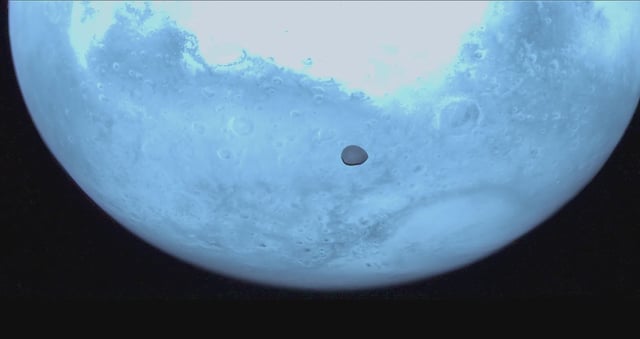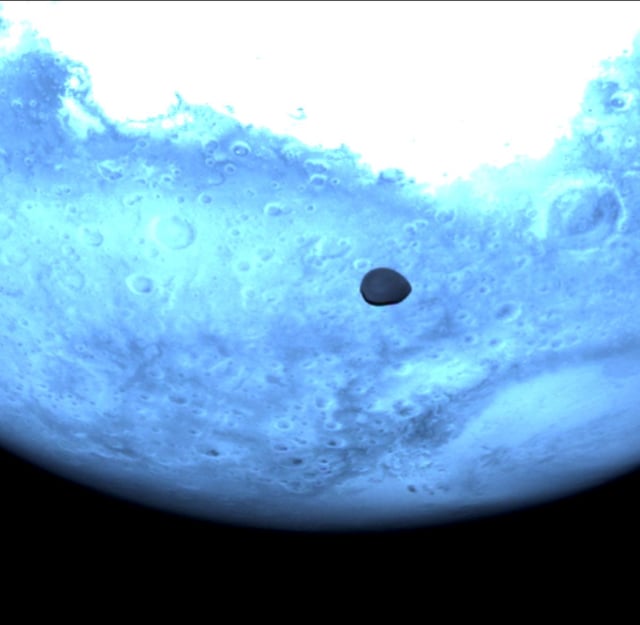Overview
- The European Space Agency's (ESA) spacecraft Hera flew past Mars on March 12, capturing detailed images of the planet and its smaller moon, Deimos, from unique perspectives.
- Hera's flyby leveraged Mars' gravitational pull to adjust its trajectory toward its ultimate destination: the asteroid pair Didymos and Dimorphos, which it is set to study in 2026.
- The spacecraft recorded over 600 images within a 30-minute window, including thermal and hyperspectral data, revealing that Deimos is warmer than Mars due to the planet's cooling atmosphere.
- Scientists aim to use the new data to better understand the origins of Mars' moons, which may either be captured asteroids or fragments from a past collision with the planet.
- The mission is part of ESA's planetary defense program, designed to study asteroids and develop methods to protect Earth from potential future impacts.



